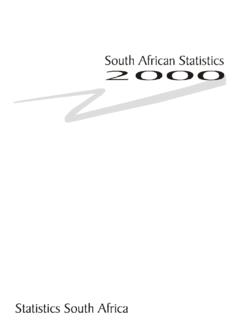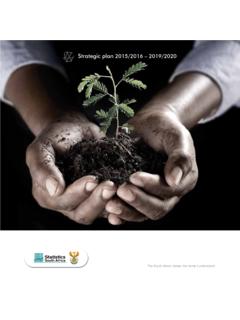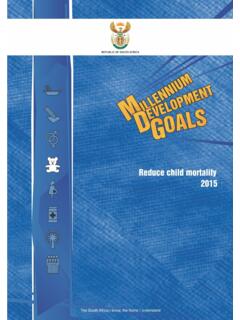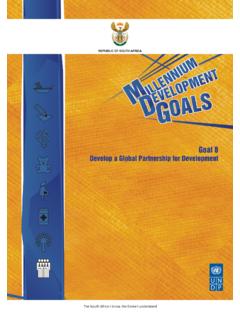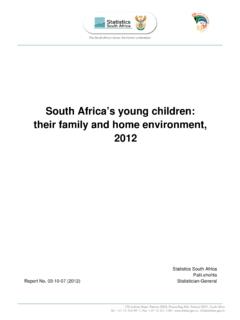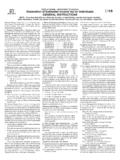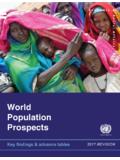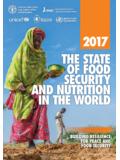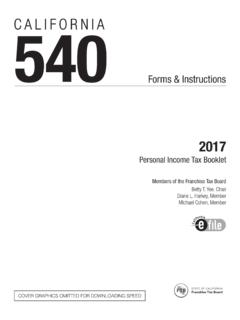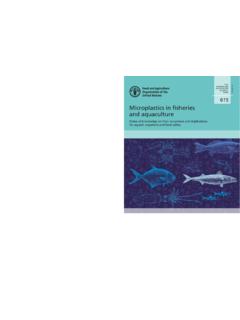Transcription of Mid-year population estimates - Statistics South …
1 T +27 12 310 8911 F +27 12 310 8500 Private Bag X44, Pretoria, 0001, South Africa ISIbalo House, Koch Street, Salvokop, Pretoria, 0002 STATISTICAL RELEASE P0302 Mid-year population estimates2017 Embargoed until: 31 July 2017 11:30 ENQUIRIES: FORTHCOMING ISSUE: EXPECTED RELEASE DATE: User Information Services 2018 31 July 2018 Tel: (012) 310 8600 / 4892 / 8390 Statistics South AFRICA P0302 Mid-year population estimates , 2017 ii Contents Summary.
2 1 1. Introduction .. 3 2. Demographic and other assumptions .. 3 3. Demographic and other indicators .. 5 4. National population estimates .. 8 5. Provincial population estimates .. 11 Demographic assumptions .. 11 Migration patterns .. 14 Provincial distributions .. 16 References .. 19 Tables Table 1: Mid-year population estimates for South Africa by population group and sex, 2017 .. 2 Table 2: Mid-year population estimates by province, 2017 .. 2 Table 3: Assumptions of expectation of life at birth without AIDS and fertility.
3 4 Table 4: International net-migration assumptions for the period 1985 2021 .. 4 Table 5: Demographic indicators, 2002 2017 .. 6 Table 6: Births and deaths for the period 2002 2017 .. 7 Table 7: HIV prevalence estimates and the number of people living with HIV, 2002 2017 .. 8 Table 8: Mid-year estimates by population group and sex, 2017 .. 8 Table 9: estimated annual population growth rates, 2002 2017 .. 9 Table 10: Mid-year population estimates by population group, age and sex, 2017 .. 10 Table 11: estimated provincial migration streams 2006 2011.
4 14 Table 12: estimated provincial migration streams 2011 2016 .. 15 Table 13: estimated provincial migration streams 2016 2021 .. 15 Table 14: Percentage distribution of the projected provincial share of the total population , 2002 2017 .. 16 Table 15: Provincial population estimates by age and sex, 2017 .. 17 Figures Figure 1: Provincial average total fertility rate .. 11 Figure 2: Provincial average life expectancy at birth (males) .. 13 Figure 3: Provincial average life expectancy at birth (females).
5 13 Statistics South AFRICA P0302 Mid-year population estimates , 2017 1 Summary This release uses the cohort-component methodology to estimate the 2017 Mid-year population of South Africa. The estimates cover all the residents of South Africa at the 2017 Mid-year , and are based on the latest available information. estimates may change as new data become available. With the new estimate comes an entire series of revised estimates for the period 2002 2017 .
6 For 2017 , Statistics South Africa (Stats SA) estimates the Mid-year population at 56,52 million. Approximately fifty-one per cent (approximately 28,9 million) of the population is female. Gauteng comprises the largest share of the South African population . Approximately 14,3 million people (25,3%) live in this province. KwaZulu-Natal is the province with the second largest population , with 11,1 million people (19,6%) living in this province. With a population of approximately 1,21 million people (2,1%), Northern Cape remains the province with the smallest share of the South African population .
7 About 29,6% of the population is aged younger than 15 years and approximately 8,1% (4,60 million) is 60 years or older. Similar proportions of those younger than 15 years live in Gauteng (21,1%) and KwaZulu-Natal (21,1%). Of the elderly aged 60 years and older, the highest percentage 24,0% (1,10 million) reside in Gauteng. The proportion of elderly persons aged 60 and older is increasing over time. Migration is an important demographic process in shaping the age structure and distribution of the provincial population .
8 For the period 2016 2021, Gauteng and Western Cape are estimated to experience the largest inflow of migrants of approximately, 1 595 106 and 485 560 respectively (see migration stream tables for net migration). Life expectancy at birth for 2017 is estimated at 61,2 years for males and 66,7 years for females. The infant mortality rate for 2017 is estimated at 32,8 per 1 000 live births. The estimated overall HIV prevalence rate is approximately 12,6% among the South African population . The total number of people living with HIV is estimated at approximately 7,06 million in 2017 .
9 For adults aged 15 49 years, an estimated 18,0% of the population is HIV positive. Statistics South AFRICA P0302 Mid-year population estimates , 2017 2 Table 1: Mid-year population estimates for South Africa by population group and sex, 2017 population group Male Female Total Number % distribution of males Number % distribution of females Number % distribution of total Black African 22 311 400 80,8 23 345 000 80,8 45 656 400 80,8 Coloured 2 403 400 8,7 2 559 500 8,9 4 962 900 8,8 Indian/Asian 719 300 2,6 689 800 2,4 1 409, 100 2,5 White 2 186 500 7,9 2 307 100 8,0 4 493 500 8,0 Total 27 620 600 100,0 28 901 400 100,0 56 521 900 100.
10 0 Table 2: Mid-year population estimates by province, 2017 population estimate % of total population Eastern Cape 6,498,700 Free State 2,866,700 Gauteng 14,278,700 KwaZulu-Natal 11,074,800 Limpopo 5,778,400 Mpumalanga 4,444,200 Northern Cape 1,214,000 North West 3,856,200 Western Cape 6,510,300 Total 56 521 900 100,0 PJ Lehohla Statistician-General Statistics South AFRICA P0302 Mid-year population estimates , 2017 3 1.


